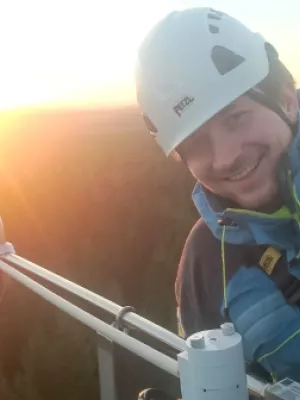
Michal Heliasz
Research engineer

Retrieval and validation of forest background reflectivity from daily Moderate Resolution Imaging Spectroradiometer (MODIS) bidirectional reflectance distribution function (BRDF) data across European forests
Author
Summary, in English
Information about forest background reflectance is needed for accurate biophysical parameter retrieval from forest canopies (overstory) with remote sensing. Separating under- and overstory signals would enable more accurate modeling of forest carbon and energy fluxes. We retrieved values of the normalized difference vegetation index (NDVI) of the forest understory with the multi-angular Moderate Resolution Imaging Spectroradiometer (MODIS) bidirectional reflectance distribution function (BRDF)/albedo data (gridded 500 m daily Collection 6 product), using a method originally developed for boreal forests. The forest floor background reflectance estimates from the MODIS data were compared with in situ understory reflectance measurements carried out at an extensive set of forest ecosystem experimental sites across Europe. The reflectance estimates from MODIS data were, hence, tested across diverse forest conditions and phenological phases during the growing season to examine their applicability for ecosystems other than boreal forests. Here we report that the method can deliver good retrievals, especially over different forest types with open canopies (low foliage cover). The performance of the method was found to be limited over forests with closed canopies (high foliage cover), where the signal from understory becomes too attenuated. The spatial heterogeneity of individual field sites and the limitations and documented quality of the MODIS BRDF product are shown to be important for the correct assessment and validation of the retrievals obtained with remote sensing.
Department/s
- Dept of Physical Geography and Ecosystem Science
- ICOS Sweden
Publishing year
2021-01-27
Language
English
Pages
621-635
Publication/Series
Biogeosciences
Volume
18
Issue
2
Document type
Journal article
Publisher
Copernicus GmbH
Topic
- Forest Science
- Physical Geography
Status
Published
ISBN/ISSN/Other
- ISSN: 1726-4170